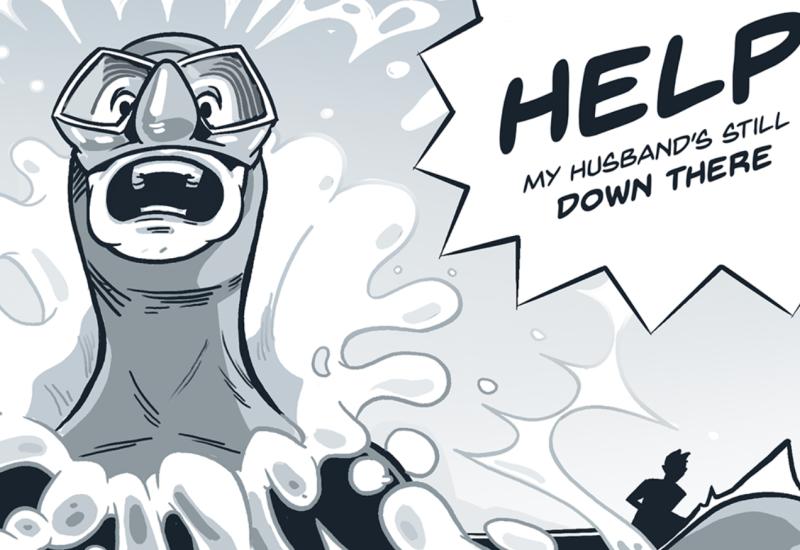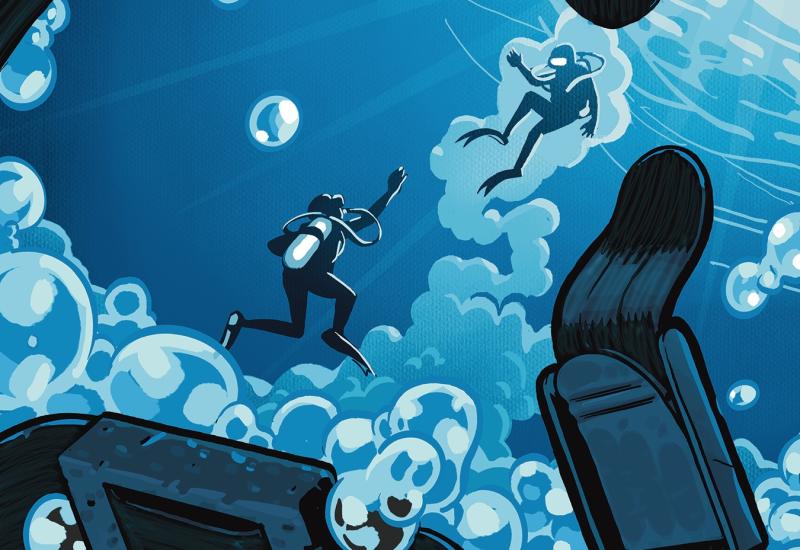Pushing the Limits on a Liveaboard Leads to DCI for this Scuba Diver

Carlo GiambarresiDiving to limits leads to DCI for one vacationing diver.
Heath didn’t feel right. His arm was numb, and he was dizzy. He needed to get help. Stumbling out of his cabin on the liveaboard dive boat, he immediately sought out a crewmember. It was only the first day of diving, and his computer told him there was no problem with any of his four dives. It couldn’t be decompression illness, could it?
Without hesitation, the crew put their emergency plan into action.
The Diver
Heath was a dive instructor and a technical diver. At 59 years old, he was enjoying a second career of diving, leading trips and traveling the world. After working with students and dive groups from his local shop, he decided to take a real vacation. He had no responsibilities on this trip other than to have fun. Of course, he was already making plans to bring a group from the shop later that year.
The Dive
The liveaboard had the capacity to provide nitrox on his dives, so Heath was taking full advantage of it. He planned to dive 32 percent nitrox all week to get the most bottom time on every dive.
The first day in the water, Heath made four multilevel dives while following his dive computer. It was set up to calculate his no-decompression limits based on the gas mix he was breathing. His first dive was to 106 feet with a total bottom time of 53 minutes. He had a surface interval of 1:49. Dive two was to 123 feet for 68 minutes, followed by 2:27 out of the water. Dive three was a dive to 91 feet for 75 minutes with a surface interval of 1:35. His fourth and final dive of the day was to 93 feet for 43 minutes. He finished up in time for dinner at 6:30 p.m. Heath didn’t experience any problems on the dives and performed a routine safety stop at the end of each one.
The Accident
Ten minutes after Heath got back on the boat, he noticed his left shoulder hurt. He wrote off the pain as a result of his BC strap rubbing him the wrong way. After dinner, he felt lightheaded and decided to lie down in his cabin. While he rested, he realized that his left shoulder down to his elbow was growing numb. After tossing and turning for an hour, he came back out of his cabin and approached a crewmember, who noted Heath looked pale. Heath complained that he felt weak and was having trouble walking. When he nearly collapsed on the deck, the crew made him comfortable and administered 100 percent oxygen. After 35 minutes, the shoulder and elbow numbness was nearly resolved, and Heath said he felt fine. The crew transported Heath to a nearby island’s hyperbaric chamber and alerted its medical team that he was on his way. Upon examination, a physician determined that Heath was ataxic, which means he had a loss of coordination, and he was unsteady on his feet.
Four hours after his first symptoms appeared, Heath entered the hyperbaric chamber for a U.S. Navy Treatment Table 6. The treatment lasted about five hours. By the end of the treatment, he reported his symptoms were clear. The next morning, he returned to the chamber for a follow-up and reported some mild numbness in his left arm had returned overnight. He received a second treatment in the form of a U.S. Navy Treatment Table 5. That treatment lasted 2.5 hours, after which all of Heath’s symptoms were resolved.
Heath returned to diving four weeks later and has completed hundreds of dives since without incident. He makes sure he stays well within recreational no-decompression limits and works to stay hydrated when he is diving.
Analysis
Dive computers allow you to extend your bottom time on dives. They re-evaluate your depth every minute or so and recalculate your no-decompression limits accordingly. Before computers, divers had to plan their dives based on the deepest depth, even if they were there for only a minute. If Heath planned his dives based on a dive table, he would have had a required decompression obligation after each individual dive and most likely wouldn’t have been able to do the fourth dive at all.
Heath was using a dive computer and making multilevel dives, but it is still clear that he was diving the computer to its maximum limits. He was diving nitrox, which gave him extended bottom time on the dives, but nitrox used that way isn’t any safer than air. Nitrox, or enriched air, has reduced amounts of nitrogen, but when used on nitrox tables, or a computer set to the gas mix, it is based on the same algorithm as air tables.
There’s a risk of DCI on every dive. The only way to completely avoid that risk is to stay out of the water. Your risk is increased by pushing the tables, or your computer, to the limits. Heath’s rapid onset of symptoms after he surfaced from his last dive is an indication of the nitrogen gas load he had built up in his system. It is entirely possible that he had symptoms before his last dive and simply failed to recognize them.
Lessons for Life
Don’t push your computer (or table) to the limits — those limits are theoretical numbers based on mathematical models. Each diver is unique — you might get lucky or it might catch up with you.
Know and recognize symptoms of decompression illness — denial is a symptom. When you feel something unusual in your body, be aware that it might be decompression illness. Do not return to the water while you have symptoms. That will only make things worse.
Know how to administer emergency oxygen first aid. Be a prepared buddy and take a class in oxygen first aid and diving-emergency procedures.
In Heath’s case, everything went as well as could be expected. He could have alerted the crew an hour or so earlier, when he noticed the numbness and dizziness, but once he did, everything moved quickly and efficiently. One indication of a problem is the effect of oxygen. When Heath began breathing 100 percent oxygen, his symptoms resolved or were significantly reduced. That is a definite sign that he had nitrogen buildup, and the bubbles that formed were restricting blood flow and causing damage downstream. At that point, there was no question he needed further treatment.
The U.S. Navy Treatment Table 6 is the default hyperbaric treatment for DCI. Without extensions, the treatment lasts 285 minutes — not including initial descent time. The chamber is compressed to 60 feet of pressure, and the patient breathes 100 percent oxygen for 20 minutes, alternating with five-minute air breaks for three cycles. Then, pressure is reduced to 30 feet, and there are two more cycles of 60 minutes and 15 minutes, respectively. That doesn’t include time breathing oxygen on both ascents, which take 30 minutes each. Treatment Table 5 is a typical follow-up treatment that takes a total of 135 minutes.
It’s often tempting to make each dive last as long as possible. In Heath’s case, he made four long dives but ended up missing the rest of the week. Enjoy the underwater world, but use common sense, and don’t push every dive to the limit. It will pay off in the long run.
Signs and Symptoms of Decompression Illness
Symptoms of DCI
- Unusual fatigue
- Skin itch
- Pain in joints and/or muscles of the arms, legs or torso
- Dizziness, vertigo, ringing in the ears
- Numbness, tingling, paralysis
- Shortness of breath
Signs of DCI
- Skin might show a blotchy rash
- Paralysis, muscle weakness
- Difficulty urinating
- Confusion, personality changes, bizarre behavior
- Amnesia, tremors
- Staggering
- Coughing up bloody, frothy sputum
- Collapse or unconsciousness
Note: Symptoms and signs usually appear within 15 minutes to 12 hours after surfacing; in severe cases, symptoms might appear before surfacing or immediately afterward. Delayed occurrence of symptoms is rare, but it does occur, especially if air travel follows diving.
(Source: Divers Alert Network)










